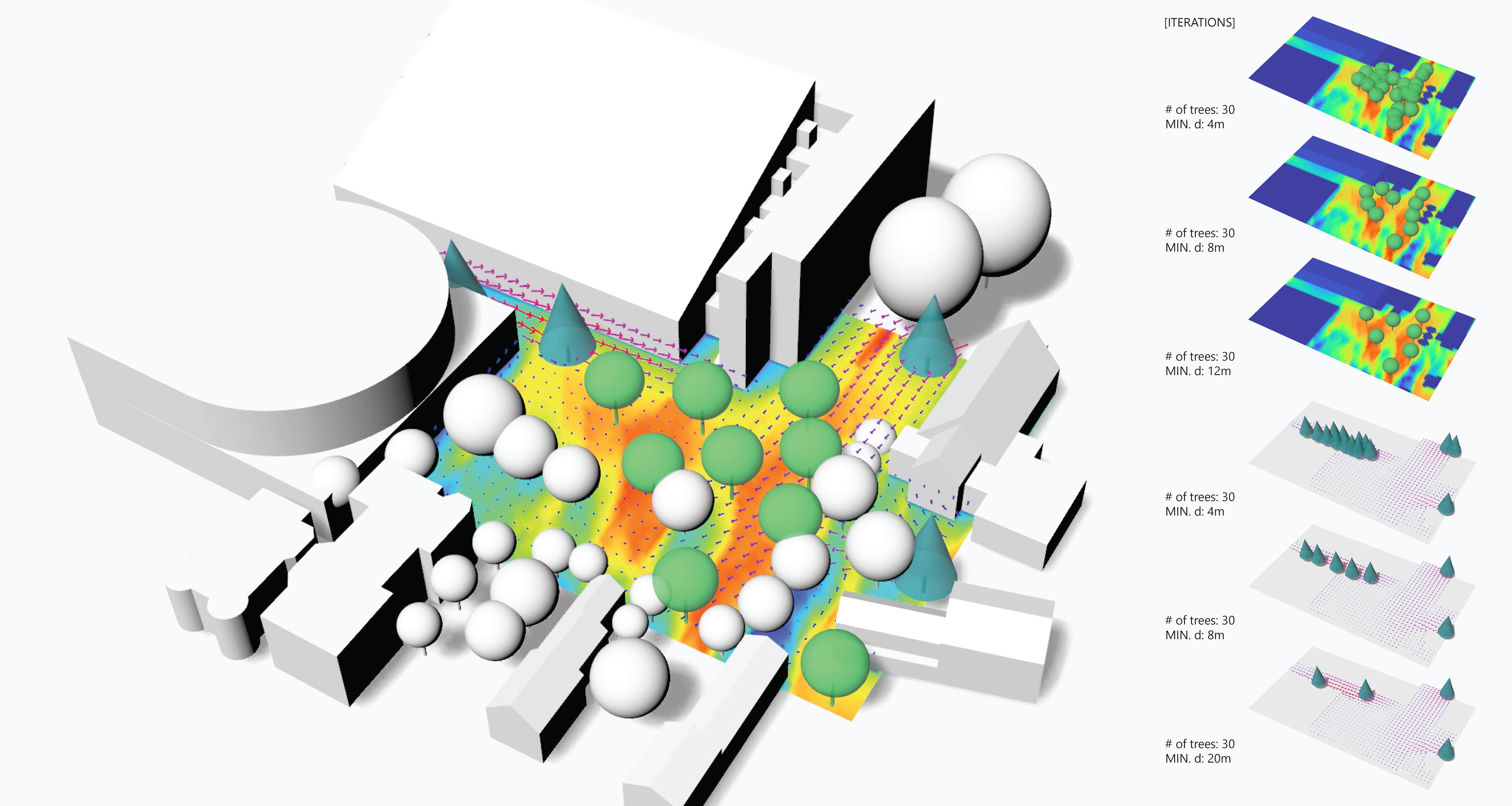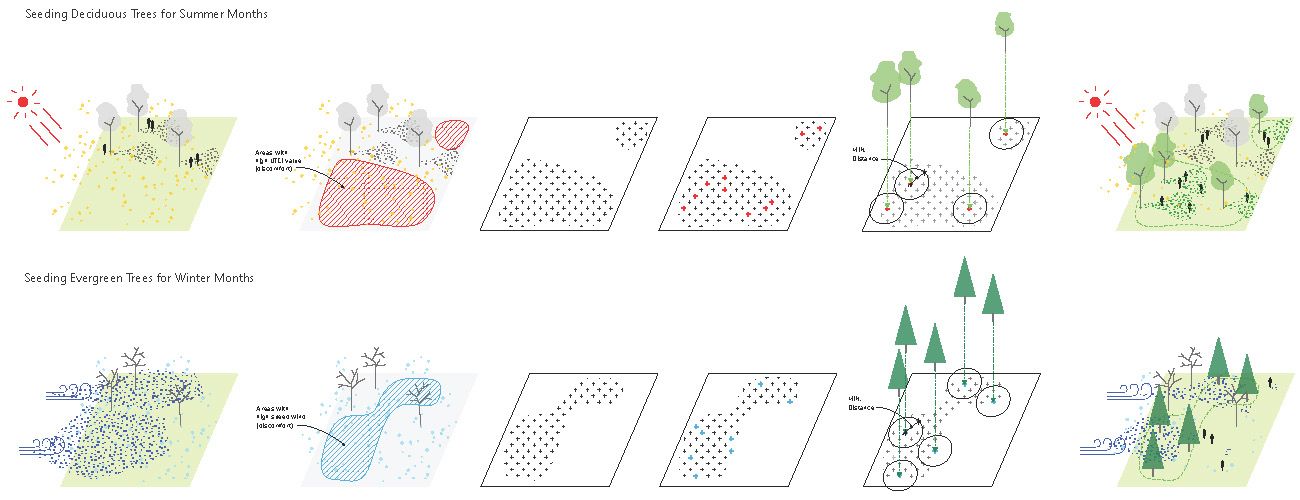Seeder
An Optimizing Tool for Outdoor Comfort

Seeder integrates climate analysis with landscape design to find the optimal plan for outdoor comfort. Successful landscape design creates a spatial and aesthetic harmony between hard-scape and soft-scape. However, as Le Corbusier argues, the landscape should also serve as a “utilitarian” medium that expands its discipline to include climate parameters such as heat, wind, humidity, and temperature.
By assessing environmental analysis such as UTCI (Universal Thermal Climate Index) map (simulations from Climate Studio) and wind analysis (CFD simulations from Butterfly), Seeder uses data from the simulation results to determine the areas of discomfort for optimization. Once data is retrieved, Seeder begins its optimization process by designing its micro-climate with the suitable arrangement and types of vegetations. Deciduous trees are placed in areas with high UTCI values to enhance thermal comfort and filter excessive solar radiation during summer. On the other hand, areas of discomfort caused by harsh winter winds are planted with evergreen trees for wind shielding effects. The GSD backyard is used for outdoor comfort optimization to test the tool. After the optimization process, the GSD backyard is now populated with newly added vegetation for the enhanced outdoor environment that can house social life more frequently and comfortably all year round.

